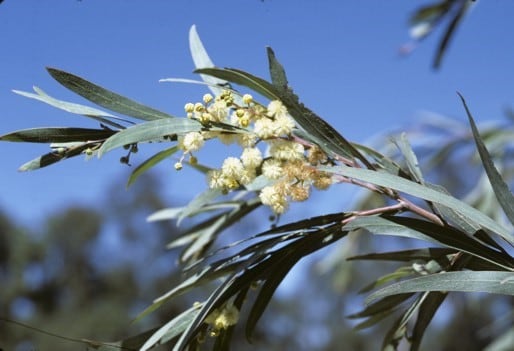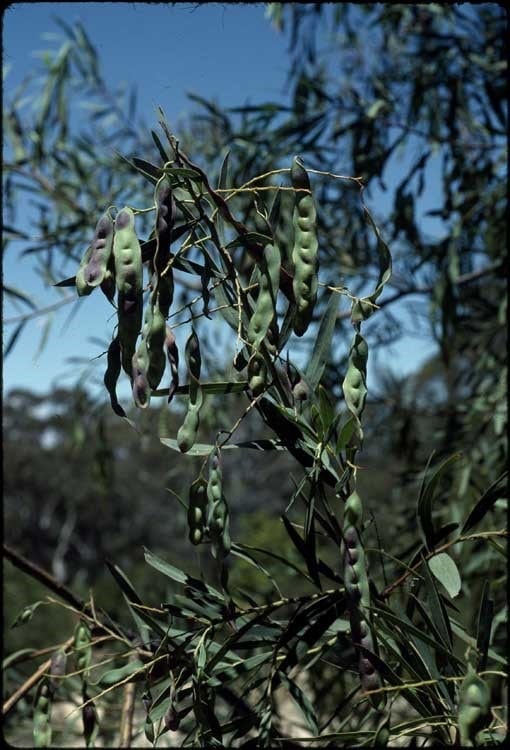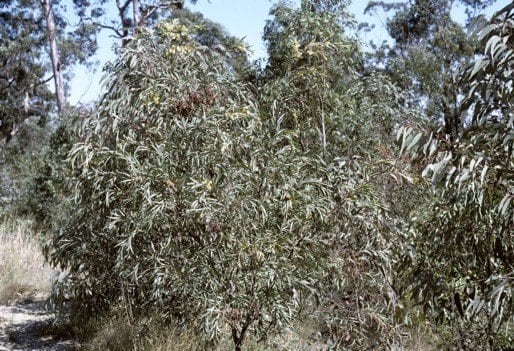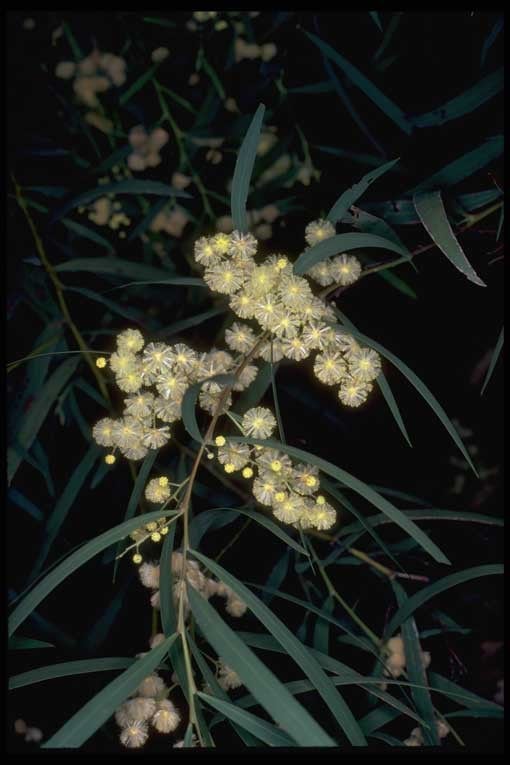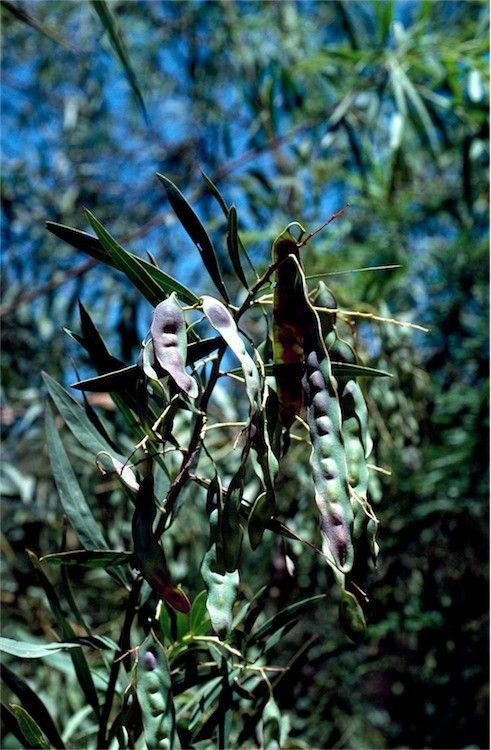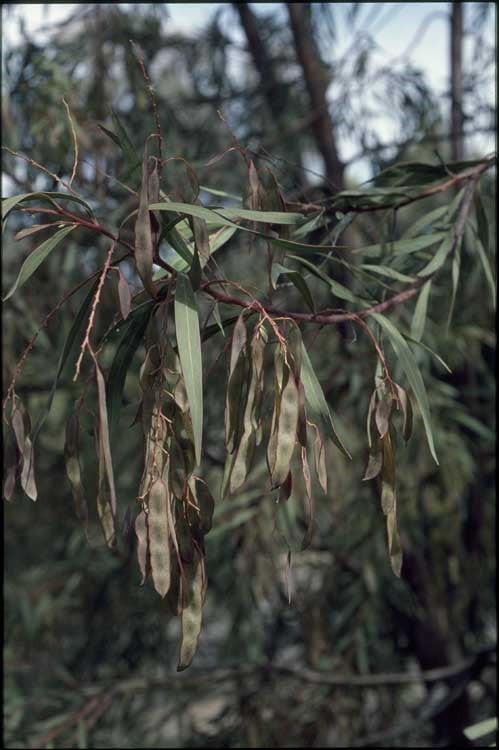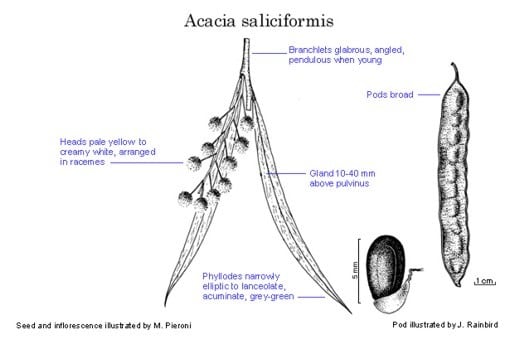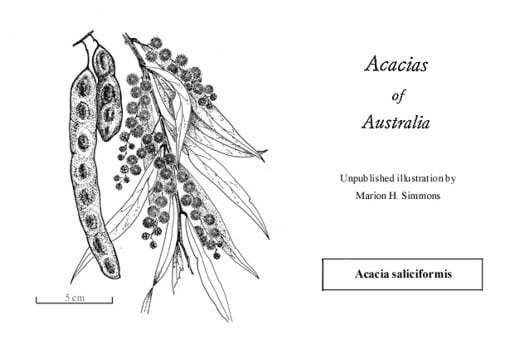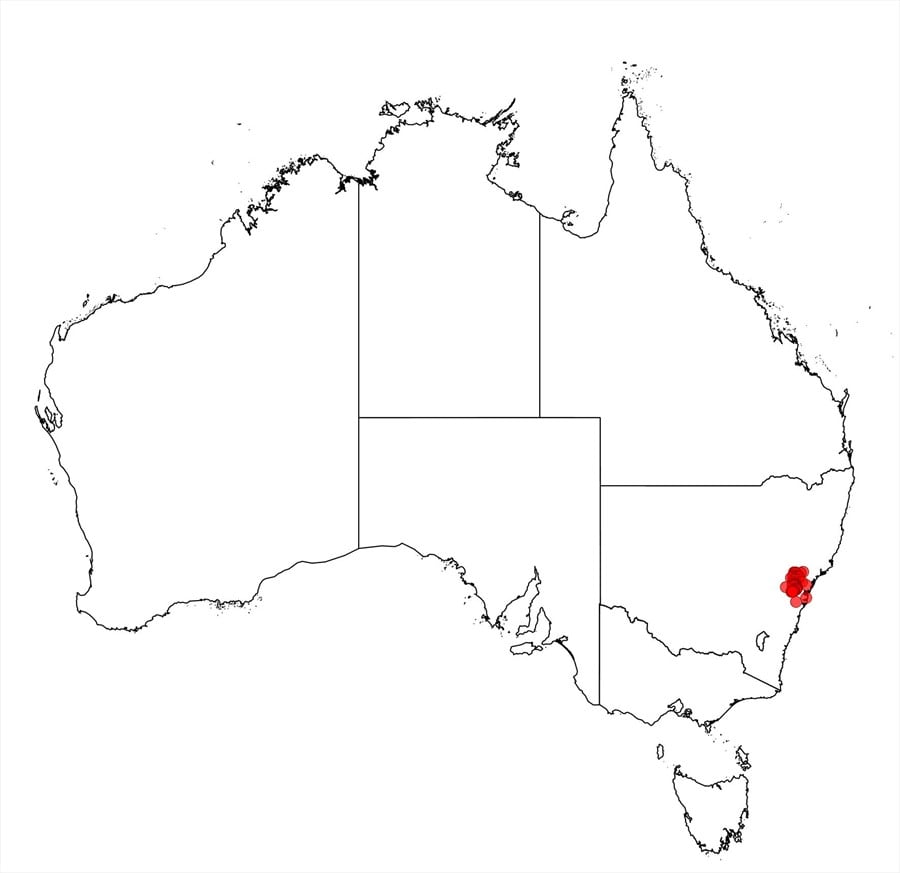Acacia saliciformis Tindale
WATTLE
Acacias of Australia
Family
Fabaceae
Distribution
Occurs principally from Mt Kindarun S to Bilpin with an outlier in the Budawang Ra., N.S.W.
Description
Bushy shrub or tree usually 2.5–7 m high; young branches pendulous. New growth reddish. Branchlets acutely angled, dark red, sometimes pruinose, glabrous. Phyllodes narrowly elliptic to lanceolate, straight to shallowly falcate, usually 5–12 (–14) cm long and 7–15 (–20) mm wide, acuminate, thin, grey-green, glabrous, with prominent midrib, obscurely penninerved; gland 1–4 cm above pulvinus, sometimes connected to midrib by a fine oblique nerve. Inflorescences racemose; raceme axes 2–8 cm long, glabrous; peduncles 3–9 mm long, glabrous; heads globular, 20–32-flowered, pale yellow to creamy white. Flowers 5-merous; sepals partially united. Pods stipitate, broadly linear to narrowly oblong, slightly raised along midline, to 12 cm long, 10–18 mm wide, firmly chartaceous, dark brown to blackish, lightly pruinose, glabrous. Seeds longitudinal, oblong-elliptic, 6–8 mm long, slightly shiny, black, minutely puncticulate; aril pileiform to clavate.
Habitat
Grows on sandstone ridges in dry sclerophyll forest.
Specimens
N.S.W.: Mt Yengo, 16 km S of Howes Valley, E.F.Constable 7185 (NSW, PERTH); Southern Budawang Ra., I.Olsen 2807 (NSW); 1.6 km N of Colo Heights, 28 Sept. 1959, M.D.Tindale s.n. (NSW, PERTH).
Notes
Similar to A. mabellae which has usually golden-puberulous raceme axes and peduncles, and long funicles that encircle the seeds.
A collection from Kulnura, a little E of the main area of occurrence, is slightly atypical in being a slender shrub 1–2 m high with phyllodes 3–7 cm long and 5–11 mm wide (e.g. E.F.Constable 7151, NSW).
FOA Reference
Data derived from Flora of Australia Volumes 11A (2001), 11B (2001) and 12 (1998), products of ABRS, ©Commonwealth of Australia
Author
B.R.Maslin
Minor edits by B.R.Maslin
This identification key and fact sheets are available as a mobile application:
URL: https://apps.lucidcentral.org/wattle/
© Copyright 2018. All rights reserved.
